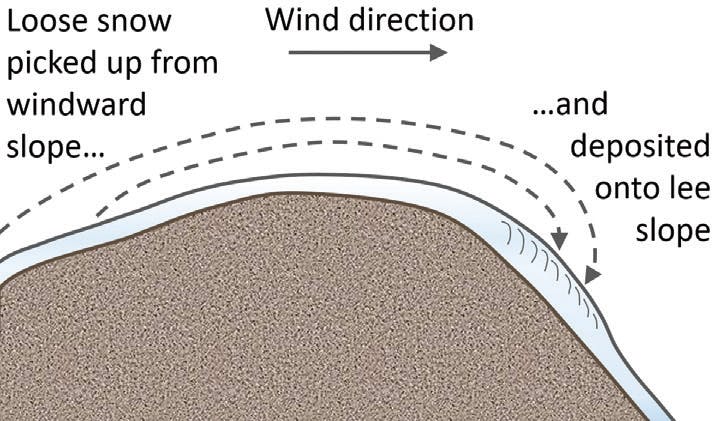
- Credit
- James Floyer
Wind transport refers to snow being lifted from the surface and blown elsewhere. It often leads to snow being transported from the windward to the leeward side of a mountain, or across the face of a mountain (known as cross-loading). Snow accumulation from wind transport can be much higher than from snowfall, making the associated wind loading a major factor in avalanches.
Wind transport varies greatly depending on wind strength, the hardness of surface snow, and the orientation of terrain to the wind. When surface snow is loose and transportable, moderate winds (25-40 km/hr) typically result in transport that is the most conducive to the creation of wind slabs. Light winds (1-25 km/h) are less effective at transporting snow and strong winds (41-60 km/h) often result in snow being spread over a wider area or even sublimating (transforming into water vapour) snow into the atmosphere.